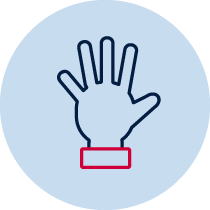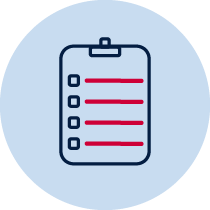Length – Which line is longer?
Students measure and compare the length of pairs of objects using informal units.
 |
 |
 |
 |
| Practical | Teacher observation | Individual | Resource required |
Measurement – length
- measures, records, compares and estimates lengths and distances using uniform informal units, metres and centimetres MA1-9MG
- describes mathematical situations and methods using everyday and some mathematical language, actions, materials, diagrams and symbols MA1-1WM
- supports conclusions by explaining or demonstrating how answers were obtained MA1-3WM
Content
Measure and compare the length of pairs of objects using informal units (ACMMG019)
National Numeracy Learning Progression mapping to the NSW mathematics syllabus
When working towards the outcome MA1-9MG the sub-elements (and levels) of Understanding units of measurement (UuM2-UuM5) and Understanding geometric properties (UGP2) describe observable behaviours that can aid teachers in making evidence-based decisions about student development and future learning.
Materials
- Base 10 unit blocks
- Which line is longer? (DOCX 84.1 KB) (maintaining scale in the diagram is important)
Teacher instructions
The purpose of this task is to gauge students’ understanding of length concepts such as:
- comparing the length of items that cannot be moved
- using uniform informal units to measure with no gaps or overlaps
- iterating a single informal unit to measure length
Present the students with the page and ask them to circle which line they estimate is longer.
Offer the students a single Base 10 cube block and ask the student to measure the lines. Allow students to use a pencil if they would like. If they are not sure how to use one unit, provide a collection of units for them to use.
Student instructions
- Estimate which line is longer. Circle the letter of the line that you estimate is longer.
- Describe how you made your estimate
- Can you use this block to measure the length of both lines using the block?
- Which line is longer? Explain how you know.
Possible areas for further exploration
May leave gaps between the block when attempting to iterate. These may be spaces created by their finger in attempting to iterate or due to other reasons. If the teacher feels that gaps are left due to difficulty manipulating the blocks, it may be worthwhile offering a unit that is larger, such as Unifix cubes, paper clips or toothpicks to see if this is the problem.
Students may not use the baseline as their starting point for measurement, which will lead to inaccurate results.
After measuring, some students may have difficulty consolidating their visual estimate of which line looks longer with their finding, and may seek to look for ways to prove their estimate was correct.
Where to next?
Students who succeed in iterating the unit may be ready for formal units of measurement. These students may be able to use a ruler to prove their thinking.
Please note:
Syllabus outcomes and content descriptors from Mathematics K-10 Syllabus © NSW Education Standards Authority (NESA) for and on behalf of the Crown in right of the State of New South Wales, 2012